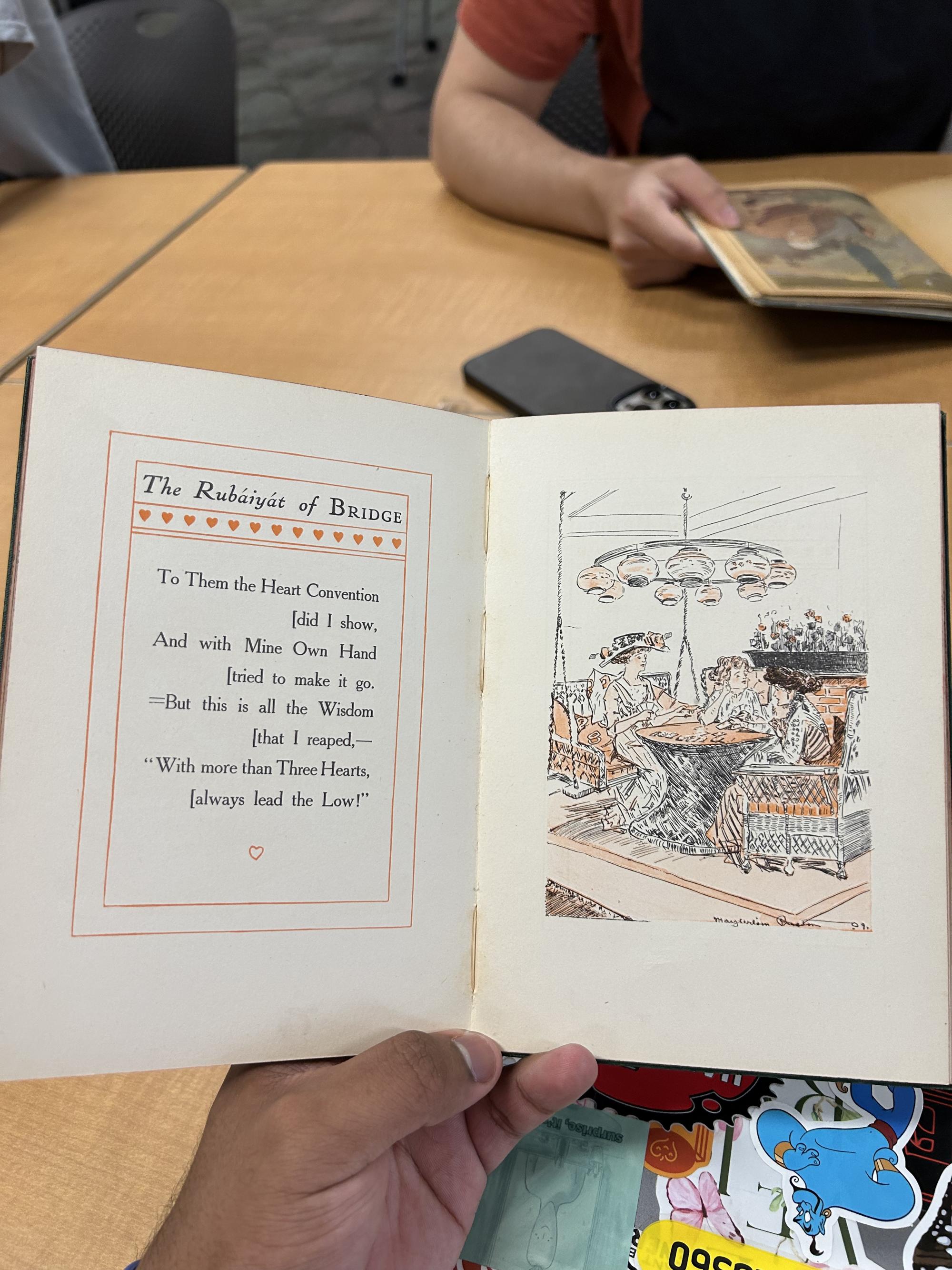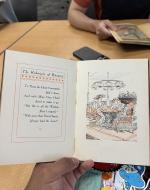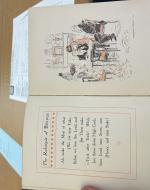Created by Andres Santos on Mon, 05/01/2023 - 01:37
Description:
In On Exhibit: Victorians and Their Museums, I would say that Barbara Black’s argument is that Fitzgerald’s Rubaiyat of Omar Khayyam as a gift book inspired the concept of what a gift book is, and inspired the thought of the same text having many different interpretations from many different people.
A gift book is exactly as it sounds; it is a book that is meant to be given as a gift to someone, with it being somewhat personalized to the person receiving the gift. In On Exhibit: Victorians and Their Museums, when Black is talking about Fitzgerald’s Rubaiyat of Omar Khayyam, she writes, “The many inscriptions inside the books’ covers attest to the poem’s status as a gift book among family and friends. Elaborately designed gilt covers…and ornamental title pages indicate the poem’s status as treasure book” (Black, 59-60). What this is saying is that while the giftbook can be any book, generally speaking, the book was picked out specifically because something about it was unique, whether it be because of the book’s contents or the design of the book itself. One consideration that could go into this is the space that the margins have where the giver can write notes/messages for the person receiving the gift. As seen in Figure One, The Rubaiyat of Bridge by Carolyn Wells would be a great example of a giftbook, because there is plenty of room to write notes/messages for the person receiving the gift book.
But of course, because it is a book, this means that there is room for so much interpretation. This is something that Black mentioned in On Exhibit: Victorians and Their Museums. When Fitzgerald’s Rubaiyat of Omar Khayyam became popular in the West, literary critics were quick to get a copy for themselves and wanted to translate the poems for the general population. In the text it reads, “The Rubaiyat’s critical reception repeats the pattern of its popular consumption, perhaps most evident in the self-satisfied body of Western criticism the Rubaiyat has generated and sustained” (Black, 60). But perhaps why people were so quick to want to transcribe the Rubaiyat was because they wanted to see and read the wisdom that Khayyam was preaching. In the text it reads, “Khayyam’s verse remains entrenched in the categorically Oriental, in the land of seers and Eastern serenity; it persists, a bit of wisdom literature that one can hold in one’s hand” (Black, 61). But regardless, a gift book is a gift book, so there is some personalized message behind it.
I would say that my edition, The Rubaiyat of Bridge by Carolynn Wells, fits into Black’s argument. This particular Rubaiyat would be a great giftbook to give to someone who played a lot of bridge, which was a card game that was heavily popularized in the United States around the 1890s. As mentioned earlier, there is a ton of room within this book to leave notes and messages. But also, the images and the poems going hand in hand would make this a great gift book for someone who plays bridge to pass the time.
For example, Figure two in The Rubaiyat of Bridge reads “To Them the Heart Convention did I show, And with Mine Own Hand tried to make it go. But this is all the Wisdom that I reaped,- ‘With more than Three Hearts, always lead the Low’! (Wells). And on this particular page, the picture that is next to the poem is of three women sitting around a table, playing a card game, presumably a game of bridge. This section of the rubaiyat could be relatable to people, particularly women, who have played bridge in a group setting.
Another example that comes to mind is Figure three in The Rubaiyat of Bridge that reads, “The Card no Question makes of ayes and noes, but High or Low, as suits the Player shows; But he who Stands Beside you, Looking on,- He knows about it all! He Knows !! He Knows!! (Wells). This poem was my particular favorite because the picture that is next to this poem is of a woman holding a hand of cards, while a man, probably her husband, is looking over her shoulder.
Regardless, The Rubaiyat of Bridge would make a great gift book because there is room to leave marginal notes, and the poems create a sense of nostalgia and understanding amongst the readers, because all the poems relate to playing bridge in one way or another.




